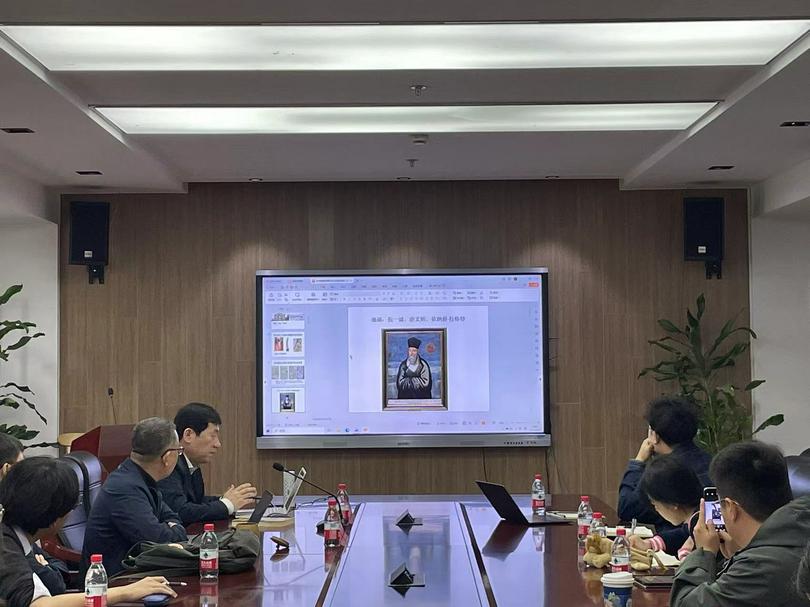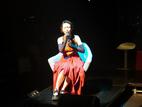On April 17, the Center for the Study of Religion and Chinese Society at Shanghai University hosted a lecture on “Early Modern Art and Cultural Exchange between the East and West.” The main speaker, Dr. Dong Shaoxin, outlined the exchange of artistic culture between China and Europe from the 16th to 18th centuries, focusing on two key mediums: missionaries and trade.
Dong Shaoxin is a research fellow and doctoral supervisor at the National Institute for Advanced Humanistic Studies at Fudan University. He obtained his PhD in history in 2004 and spent two years studying in Lisbon, Portugal. His research areas include Sino-European relations, the history of Catholicism in China, the history of the East Asian maritime region, and Ming and Qing history. He has published several books, including Between Form and Spirit: A Historical Sketch of Early Western Medicine in China and Portuguese Jesuit Francisco da Rocha in China.
The scholar began the lecture by explaining his entry into the field of artistic and cultural exchange studies. He mentioned that artistic exchange is a crucial component in the study of early modern cultural exchange between Europe and China. His interest in the subject was sparked by his travels to European museums, castles, and antique shops, where he encountered numerous images and materials related to China.
The eastward transmission of Western art by primarily missionaries encompassed church architecture, religious paintings, and Western-style art in the Qing royal court.
After the missionaries' arrival, they established churches in various locations. However, most of the preserved churches date from the late Ming and Qing dynasties. These churches range from purely Western-style to Chinese-style and hybrids of both.
The images of the Virgin Mary and Jesus during this period were primarily presented through prints and oil paintings. The exquisite illustrations in Johann Adam Schall von Bell’s print “Presentation of Books and Images” were once favored by Emperor Chongzhen. The decorative paintings created by the renowned oil painter Lagret for a church in Guangzhou received high praise from Western missionaries at that time.
Some famous Western painters not only created numerous Western-style paintings but also trained Chinese students. In order to be acknowledged by Chinese emperors, these Western painters created an artistic style that combined both Chinese and Western elements.
Dong also discussed the westward transmission of Chinese images through missionaries. He noted that some of the images depicted in missionaries’ works were based on their personal observations, while others were created by European publishers based on their imagined views of China. The image of China portrayed in the works of the famous Jesuit missionary Athanasius Kircher, such as his “China Illustrated," became widely circulated in Europe.
Missionaries, who served as treasurers of the Jesuit order, returned to Europe with Chinese images and artifacts and published a series of books about China. Since they had personal experiences in China, their works and testimonies carried more credibility.
The westward transmission of Chinese material culture through trade encompassed exported porcelain, lacquerware, fans, and paintings that included watercolors, glass paintings, wallpapers, and gouache paintings. Dong primarily introduced a collection of exported porcelain and gouache paintings he purchased in France, providing explanations and analyses of these works.
At times, missionary activity and trade functioned together to facilitate cultural exchange. Some missionaries inquired about the production processes of porcelain while engaging in missionary work. The French Jesuit missionary Jean-Baptiste du Halde, for instance, wrote about the production techniques of Chinese ceramics in two lengthy letters, which were transmitted to Europe and greatly assisted European ceramic production. Although some of the ceramic production processes depicted in exported paintings were merely schematic, European ceramic factories nonetheless utilized them in their production.
Finally, the scholar shared three specific images formed through the exchange of Eastern and Western art and culture: an image of Jesus, an image of the Virgin Mary and Child, and a painting by Luo Pin titled “Ghost Amusement Scroll.”
- Translated by Charlie Li












